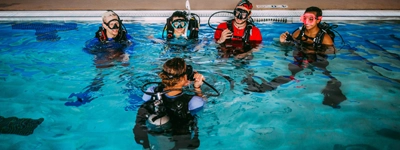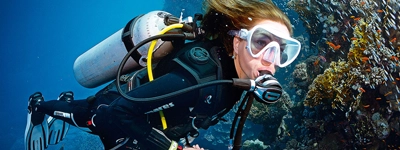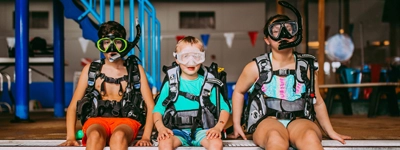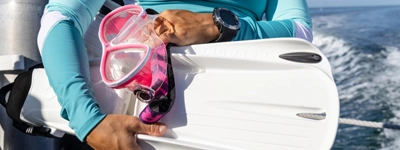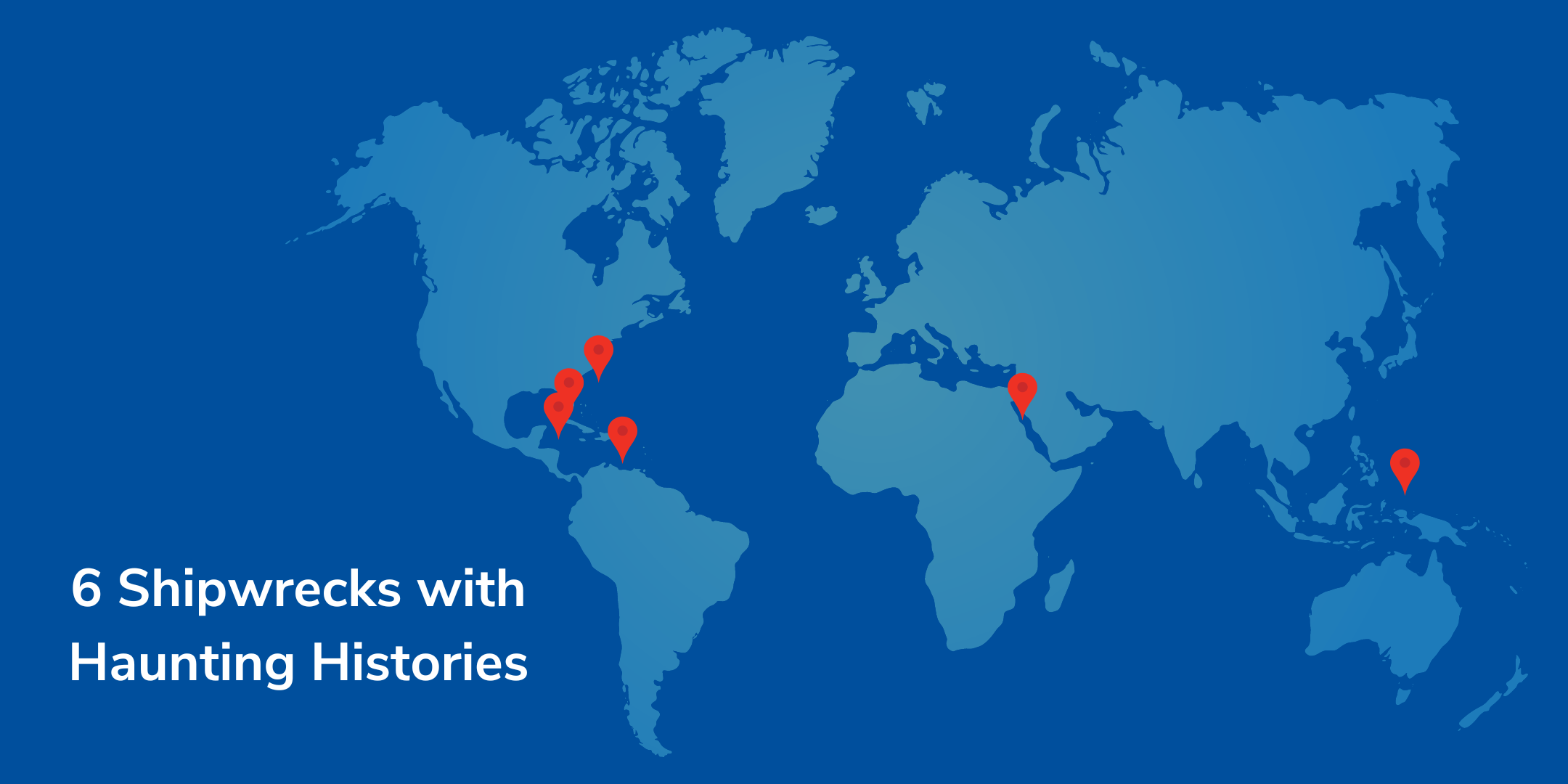
Diving through a shipwreck is like traveling back in time. While some wrecks were sunk as artificial reefs, others met tragic endings during wars. Each shipwreck has a story to tell, some more haunting than others.
1. U-352
Location
North Carolina
Sank
1942
Depth
110 feet
Visibility
Up to 100 feet
 Water Temp.
Water Temp.
High 70sº
Marine Life
Sandbar sharks and baitfish
The U-352 was a naval submarine operated by the Germans during WWII and lies at the bottom of the “Graveyard of the Atlantic”, just off the coast of North Carolina. Regardless of its non-eventful career, the U-352 is one of the most well-known shipwrecks in the area and is frequented by many recreational scuba divers. On May 9, 1942 the sub came across the United States Coast Guard cutter Icarus. After a series of unfortunate events, the sub was forced to surface and sunk shortly after. Out of 48 crew members, 33 survived and remained in prisoner of war camps for the rest of the war. Even though the U-boat failed to sink any ships during its time at sea, it remains a significant part of maritime history because it was the first U-boat sunk by the U.S. Coast Guard off the East coast during WWII’s Battle of the Atlantic.
Our Diventures travelers have taken numerous trips to North Carolina to dive the infamous U-boat. Its slender frame takes divers by surprise as they descend to the ocean’s bottom. As a result of the wreck site being close to the Gulf Stream, summer temperatures can average in the high 70s, and visibility can be up to 100 feet. It’s common to see sandbar sharks while baitfish surround the boat.
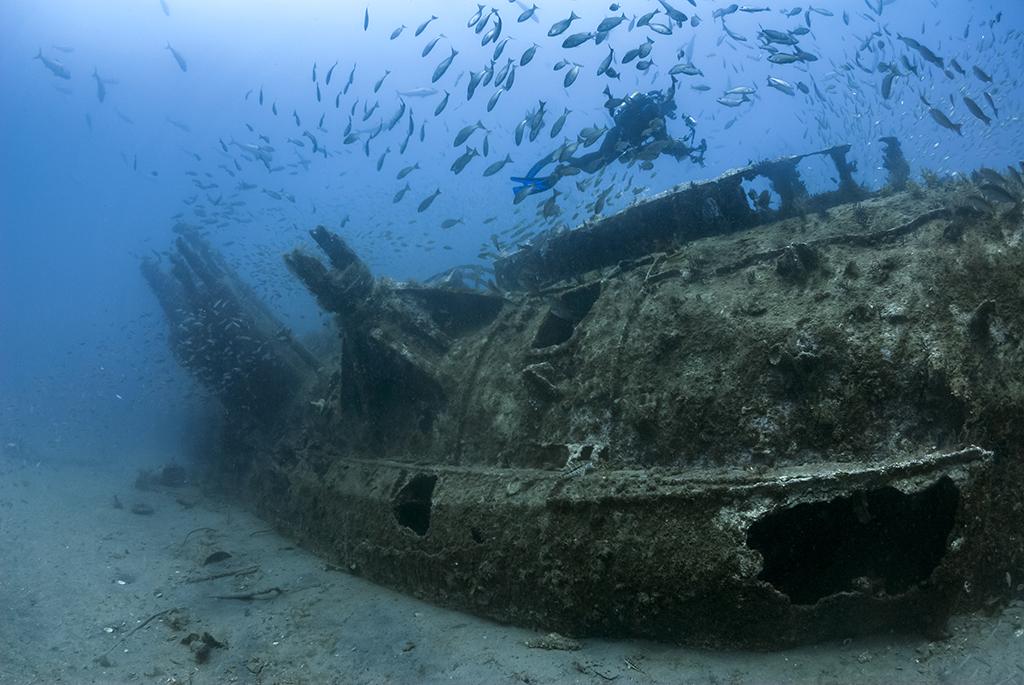
Photo: Scuba Diver Magazine
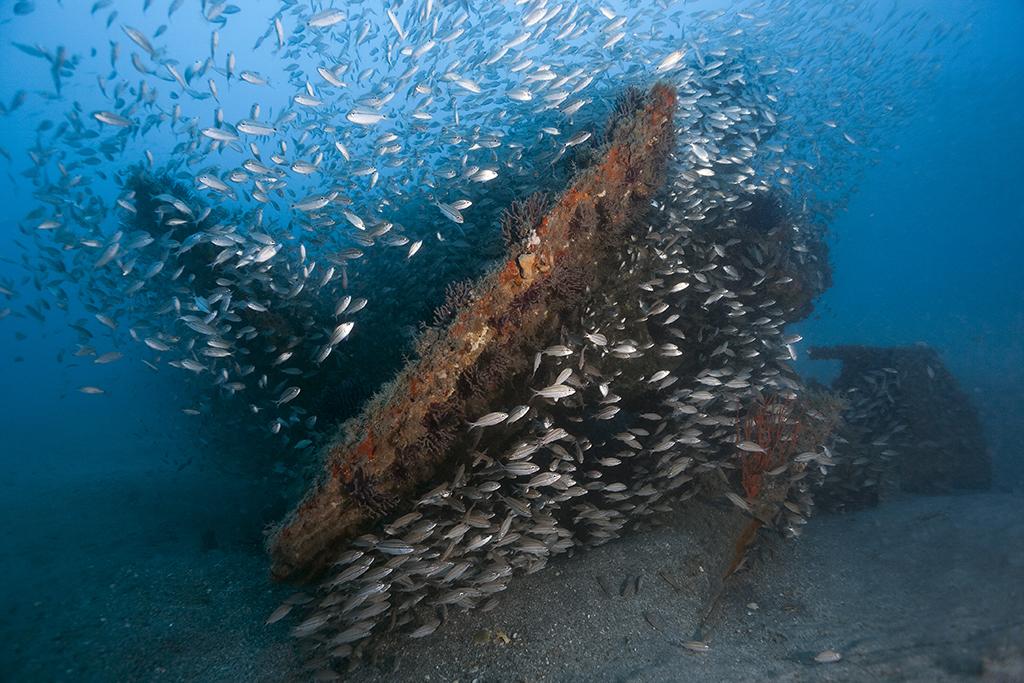
Stern of U-352. Photo: Scuba Diver Magazine
2. Hilma Hooker
Location
Bonaire
Sank
1984
Depth
Port side at 60 feet, Mast at 100 feet
Visibility
Over 100 feet
 Water Temp.
Water Temp.
Average is 80sº
Marine Life
Yellow snapper, parrotfish, angelfish and shrimp
The Hilma Hooker in Bonaire is a wreck mystery that always has a different story. The ship was built in 1951 and sank in 1984. During its life, the Hilma Hooker had multiple owners, a variety of names, a handful of technical issues and had already sunk once before.
The beginning of the end for the Hilma Hooker came in 1979 when it was purchased by a company in San Andres, Columbia. Over the next five years the ship faced technical difficulties and was towed to a port in Bonaire. While docked, the crew was unable to provide the proper documents to immigration officers. Authorities became suspicious and soon found that Interpol and the FBI had been tracking the Hilma Hooker for months for suspected drug trafficking. This prompted a search of the vessel that resulted in 25,000 pounds of marijuana found hidden behind a false bulkhead. The crew was then arrested, and the Hilma Hooker was impounded. Some believe the ship’s unique name tipped off the authorities, while some attribute its demise to an inside tip that gave them away.
While the investigation continued, it was decided the Hilma Hooker needed to be moved to an area that was safe in case it sank. Since the ship was still under investigation, it was illegal to intentionally sink it. The area chosen seemed to be made for scuba divers. The site was swimming distance from the shore, next to two coral reefs and there was little fuel left in its tanks so it could not pollute the water. Many believe this was not a coincidence and that the ship was sabotaged by divers who were eager to dive the wreck.
Diventures is always taking travelers to Bonaire. But be aware, since the Hilma Hooker was under investigation when it sank, no modifications were made to its interior making it very difficult to dive inside.
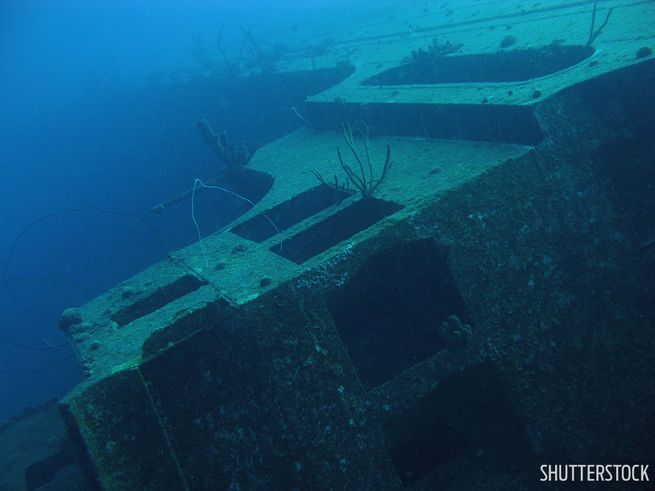
Photo: Shutterstock
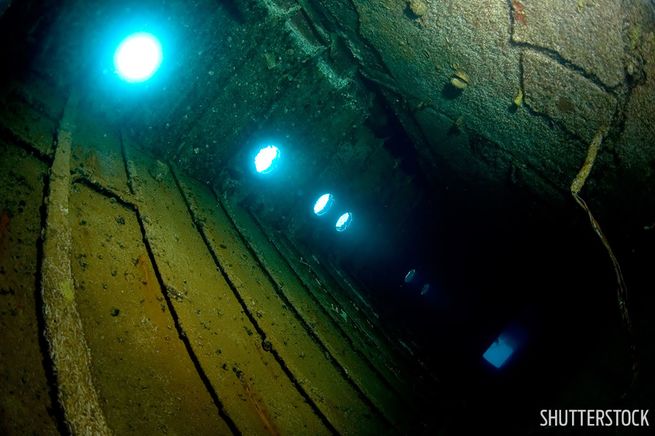
Inside the Hilma Hooker. Photo: Shutterstock
3. USS Kittiwake
Location
Grand Cayman
Sank
2011
Depth
Port side at 60 feet, Mast at 100 feet
Visibility
Up to 100 feet
 Water Temp.
Water Temp.
High 70sº to mid 80sº
Marine Life
Macro life, peppermint shrimp, fire worms and garden eels
The USS Kittiwake has had a long and distinguished career. Launching in 1945, the USS Kittiwake’s first notable expedition was during a salvage operation to free the battleship Missouri from the banks off Thimble Shoals, Virginia. During the 1950’s the ship mostly supported U.S. fleet submarines in the Atlantic.
It wasn’t until 1960 where the USS Kittiwake made its mark in military history. The vessel stood water off Cape Canaveral, Florida as the USS George Washington submarine launched the first Polaris ballistic missile ever fired by a submarine underwater. In 1963, the ship also rescued 12 refugees fleeing communist Cuba and took them to safety in Key West.
Arguably the most important mission led by the USS Kittiwake was after the 1986 Space Shuttle Challenger explosion. This event shocked the nation as the spacecraft scattered the Atlantic Ocean off Cape Canaveral. Many ships tried to locate the spaceship’s blackbox to find answers to the explosion, but none were successful except the USS Kittiwake. The Coast Guard said it was the largest search they had ever participated in, and the blackbox provided valuable information to NASA regarding the conditions of the explosion.
In 1994, the ship was decommissioned, and it wasn’t until 2011 that it sank as an artificial reef off the shores of Grand Cayman. The USS Kittiwake is the perfect symbol of maritime history and reminds divers of the many years it served.
When Diventures travels to Grand Cayman, we always stop to dive the USS Kittiwake. It is a traveler favorite and makes for excellent photo ops.
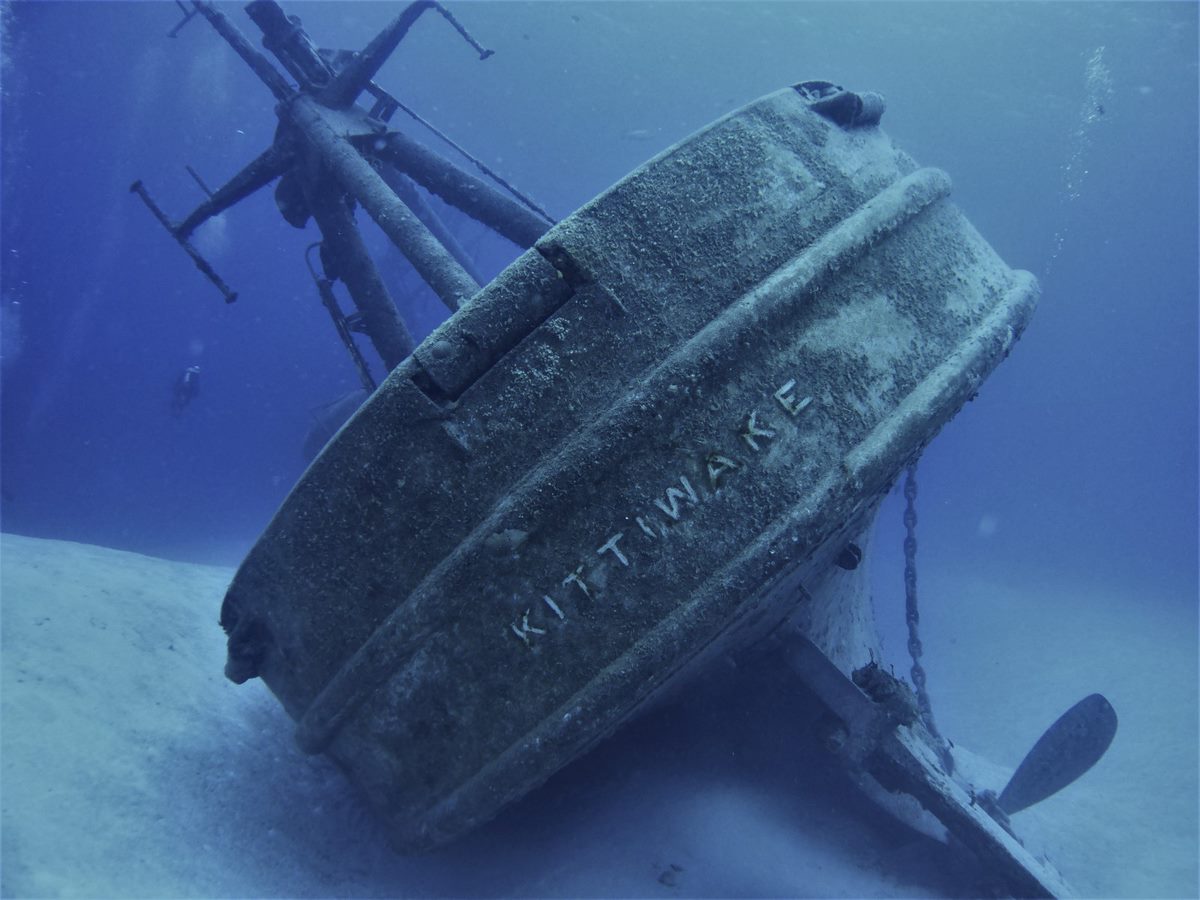
Photo: Megan Oswald
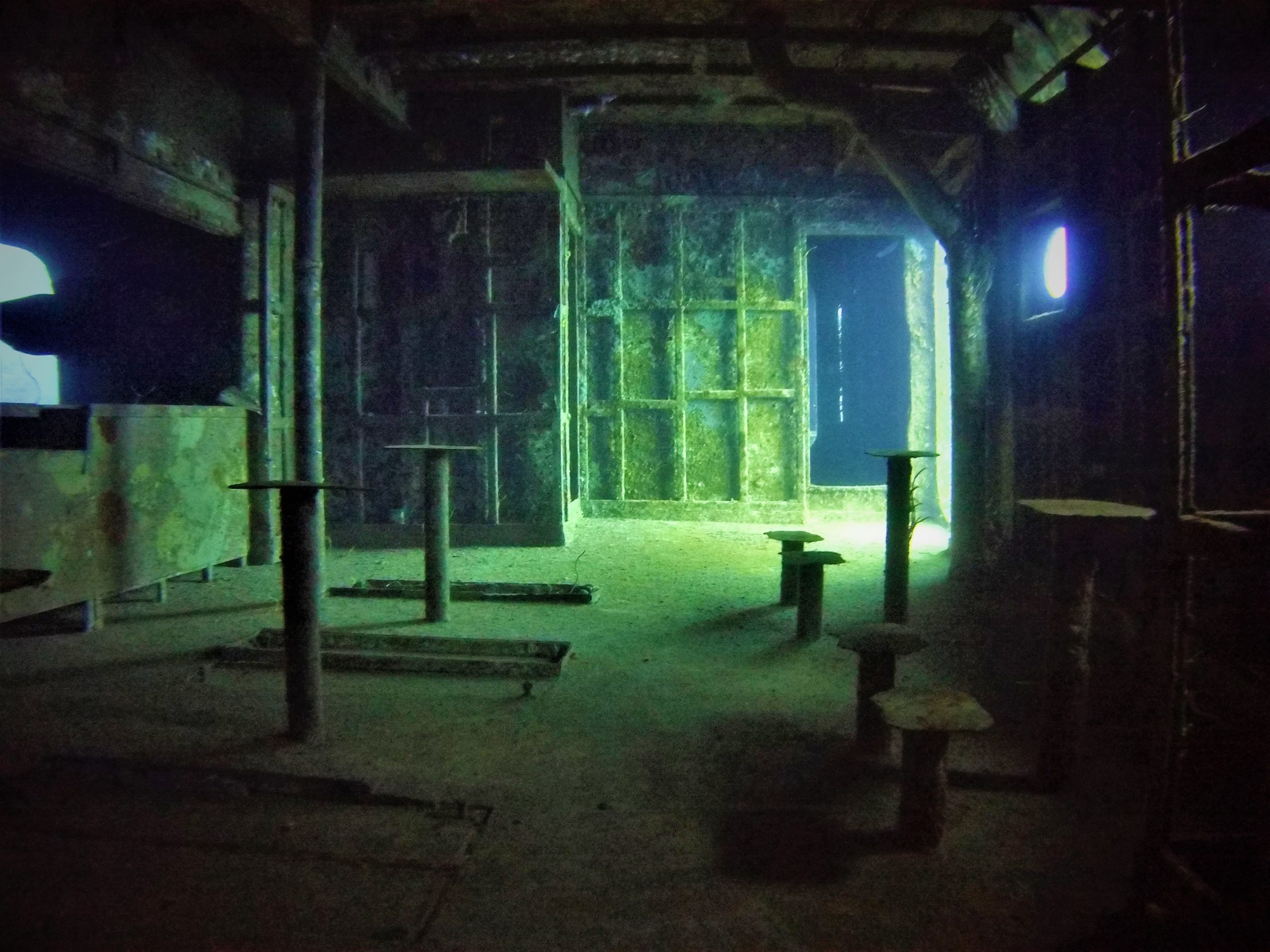
Inside USS Kittiwake. Photo: Megan Oswald
4. Helmet Wreck
Location
Palau
Sank
1944
Depth
Stern at 45 feet, bow at 110 feet
Visibility
Weather dependent, lots of sediment
 Water Temp.
Water Temp.
Low to mid 80sº
Marine Life
Staghorn, brain and lettuce corals, lionfish and tropical fish
The Helmet Wreck is a mystery still to this day. It was discovered in the late 1980s and was never documented in Navy archives, so the real identity and name of the ship is unknown. The Helmet Wreck gets its name from the stack of helmets that can be found on the ship. Some believe the ship was confiscated by the Japanese during WWII and was sunk by a U.S. aircraft in 1944.
It took seven 500-pound bombs and four torpedoes to sink the vessel. Divers can start to see a round aft gun platform around 45 feet followed by a twisted guardrail going down to the bow of the ship around 110 feet. You can also find piles of rifles, ammunition and gas masks along the sediment. It is not advised to penetrate the vessel because of unstable structures and the chance of live ammunition.
Palau has one of the largest collections of WWII wrecks, which is why history buffs love traveling with us there. Stay tuned for future trip information.
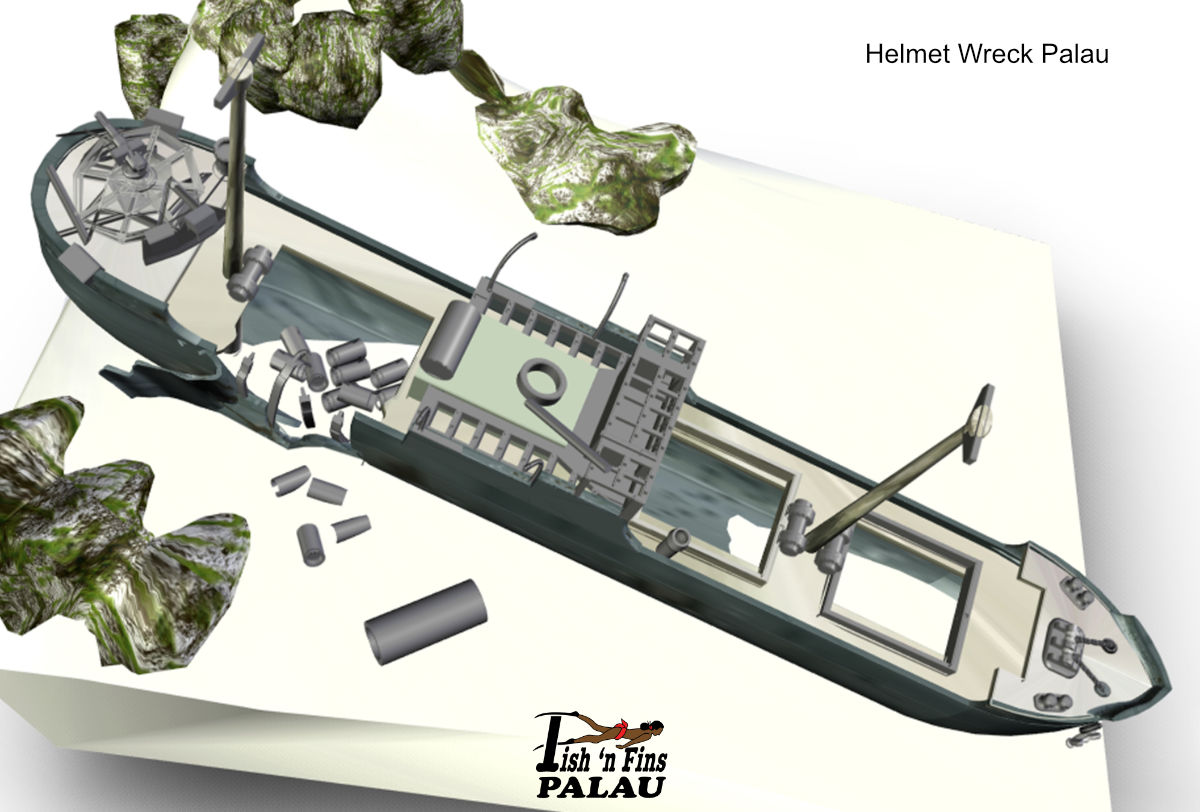
Photo: Fish ‘n Fins
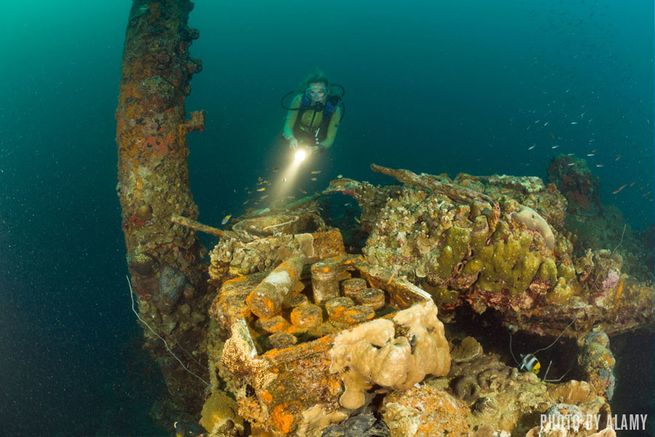
Photo: Alamy
5. SS Thistlegorm
Location
Red Sea, Egypt
Sank
1941
Depth
Starts at 52 feet, prop at 105 feet
Visibility
30-90 feet
 Water Temp.
Water Temp.
Low 80sº in summer
Marine Life
Soldierfish, sweepers, crocodile fish and teira batfish
The SS Thistlegorm had a short career but is often referred to as the most popular wreck in the world, mostly due to the amount of WWII artifacts it houses. This wreck is like swimming into an underwater museum filled with vehicles, tanks, weapons and other items from WWII.
The SS Thistlegorm was launched in 1940 and ended its career in 1941, on its way to Northern Africa from Glasglow. The ship’s mission was to deliver equipment to the British soldiers. The ship’s manifest stated it was only carrying motor parts, but really the vessel was packed with every type of war supply you could think of. When the SS Thistlegorm reached the Sinai Peninsula, they found a collision had closed the entrance to the Suez Canal. They anchored at Safe Anchorage F for two weeks until it sank.
The German bombers that hit the SS Thistlegorm were so strong that it sent two locomotives on the ship flying into the air, ripping the ship in half. The explosion was also so bright that it gave away the position of another ship that was then sunk two days later. Nine of the 42 crew members onboard died, and the Captain, William Ellis, later received an award for Officer of Most Excellent Order of the British Empire by King George VI.
The SS Thistlegorm was officially discovered by Jacque-Yves Cousteau in 1955. The ship remains in excellent condition and is surrounded by artifacts that leave divers coming back multiple times to appreciate everything the site has to offer.
Diventures visits Thistlegorm and other wrecks in the Red Sea about once every year. It is a unique experience not many divers get to experience. Our Red Sea trips fill up quickly so be sure to keep an eye out for trip announcements in the future.
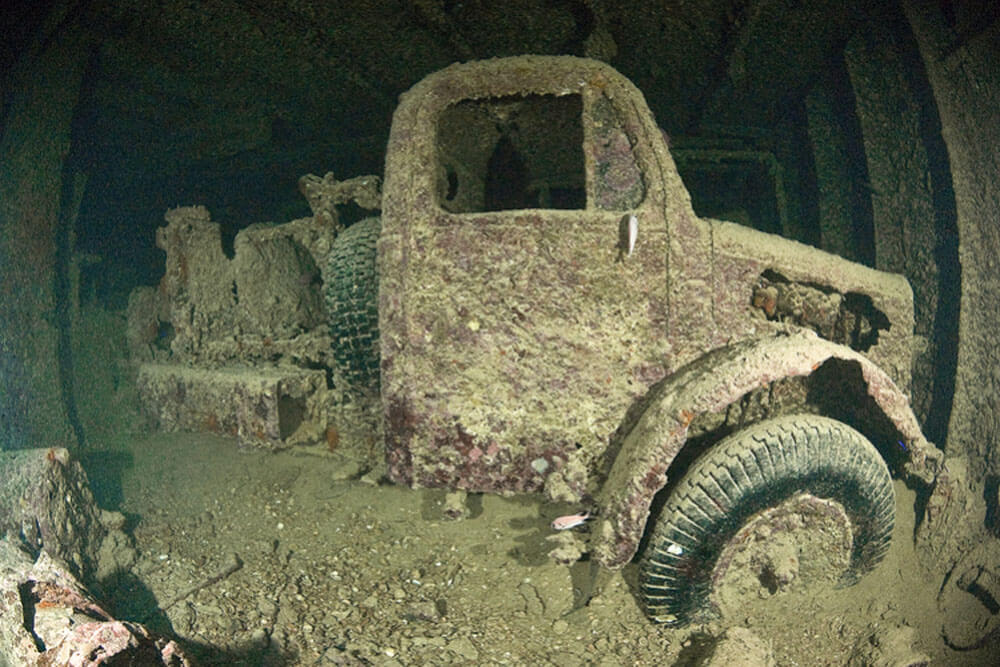
Truck inside the SS Thistlegorm. Photo: Dive Magazine
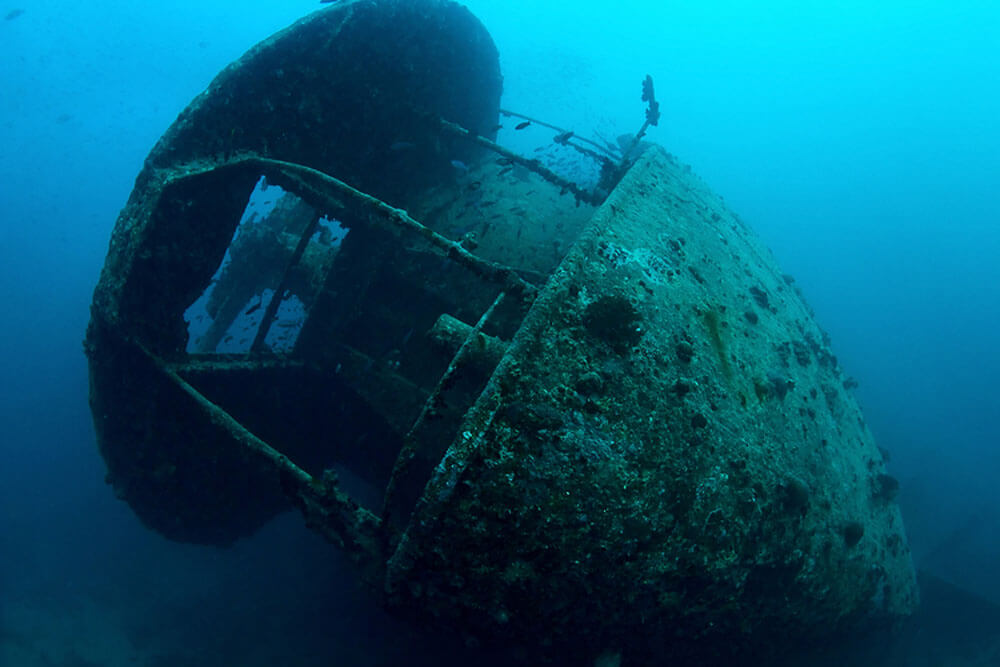
Stern of SS Thistlegorm. Photo: Dive Magazine
6. USCG Duane
Location
Key Largo, Florida
Sank
1987
Depth
Main deck at 100 feet
Visibility
55-80 feet
 Water Temp.
Water Temp.
70º-85º
Marine Life
Groupers, bull sharks and barracudas
The USCG Duane was one of seven “Treasury-Class” cutters named after important United States Secretaries. These vessels were sent out in 1937 and completed both peaceful and wartime missions for almost 40 years.
During WWII, Duane and many of the sister ships joined the Chief of Naval Operations. Due to their large size (327 feet long), the Duane and sisters escorted fleets across the Atlantic, ready to attack any U-boats that came their way. Duane was also a champion in major rescue efforts including the rescue of 250 crew members from the Dorchester.
The Duane spent the next 20+ years on rescue missions and boarding and inspecting ships suspected of carrying contraband. During that time, the ship inspected 338 steel-hulled and 5,211 wooden-hulled vessels and boarded 32 vessels. This earned the Duane the new name “Queen of the Fleet”.
As the Duane’s time had come to an end, its hull numbers were painted in gold and a plaque was placed on the ship reading, “Cutter Duane proudly sails as the Nation’s oldest active commissioned naval vessel.”
Not only is the USCG Duane the oldest active commissioned naval vessel, but it is also considered one of the most advanced dive sites in Key Largo. The depth of the artificial reef doesn’t give divers much bottom time and the currents are quite strong.
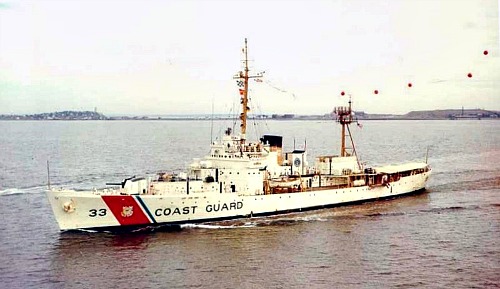
USCG Duane returning home from Vietnam. Photo: florida-keys-vacation.com
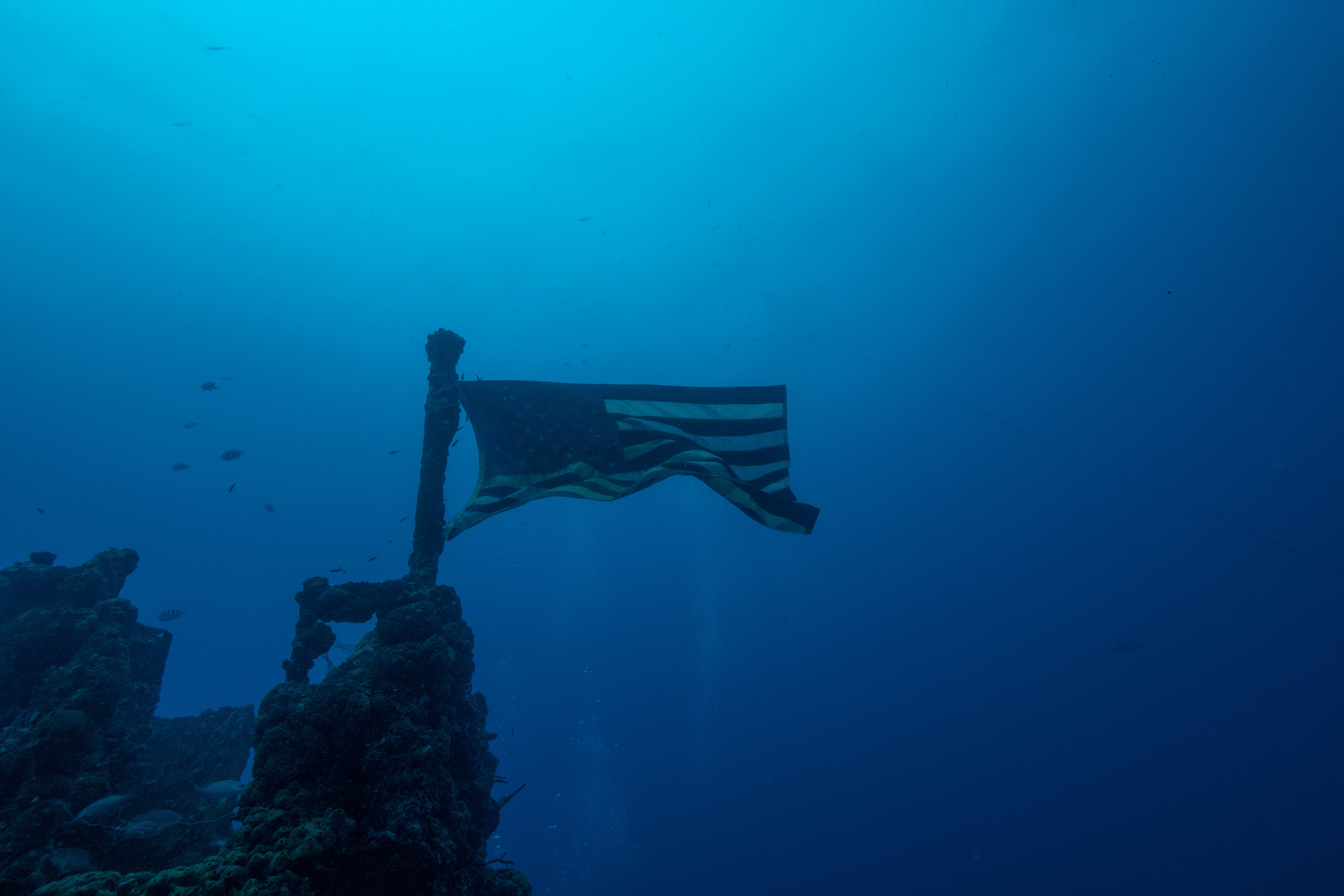
Photo: Diventures’ traveler
Ready to travel with our experienced and professional scuba diving trip leaders? Diventures offers scuba diving trips around the world with the planning already done for you from airfare to resort accommodations. Before you go, you can also take scuba diving training courses at a Diventures location near you!
References
Diver, C. (2016, April 6). The Kittiwake Connection: Grand cayman submarine wreck has an intriguing history. California Diver Magazine. Retrieved October 20, 2022, from http://californiadiver.com/the-kittiwake-connection-grand-caymans-submarine-wreck-has-an-intriguing-history/
Idol, J., Shiffman, D., Hussain, A., Crawley, A., & Duong, T. (n.d.). History of Bonaire’s Hilma Hooker shipwreck. Scuba Diving. Retrieved October 20, 2022, from https://www.scubadiving.com/history-bonaire-hilma-hooker-shipwreck
Idol, J., Shiffman, D., Hussain, A., Crawley, A., & Duong, T. (n.d.). History of the Red Sea’s Thistlegorm Shipwreck. Scuba Diving. Retrieved October 20, 2022, from https://www.scubadiving.com/history-red-sea-thistlegorm-shipwreck#page-6
Lubba, C. (2014, November 9). Why you shouldn’t miss helmet wreck when Diving Palau? Palau Dive Adventures. Retrieved October 20, 2022, from https://palaudiveadventures.com/helmet-wreck-palau/
Sanctuary, F. K. N. M. (2011, June 17). The Duane. Duane. Retrieved October 20, 2022, from https://floridakeys.noaa.gov/shipwrecktrail/duane.html
U-352 – North Carolina’s World War II shipwreck. Scuba Diver Mag. Retrieved October 20, 2022, from https://www.scubadivermag.com/u-352-north-carolinas-world-war-ii-shipwreck/
U-352. U-352 | Monitor National Marine Sanctuary. (n.d.). Retrieved October 20, 2022, from https://monitor.noaa.gov/shipwrecks/u-352.html
USCG Duane, best advanced diving key largo site. Florida. (n.d.). Retrieved October 20, 2022, from https://www.florida-keys-vacation.com/USCG-Duane.html

